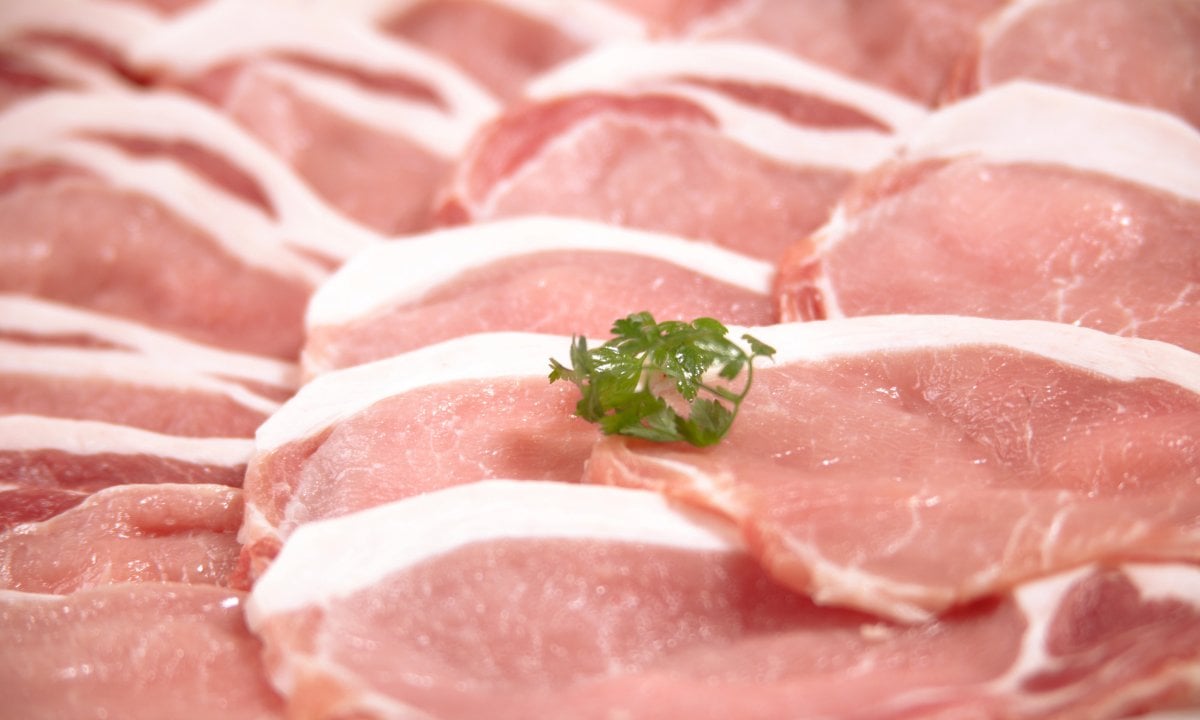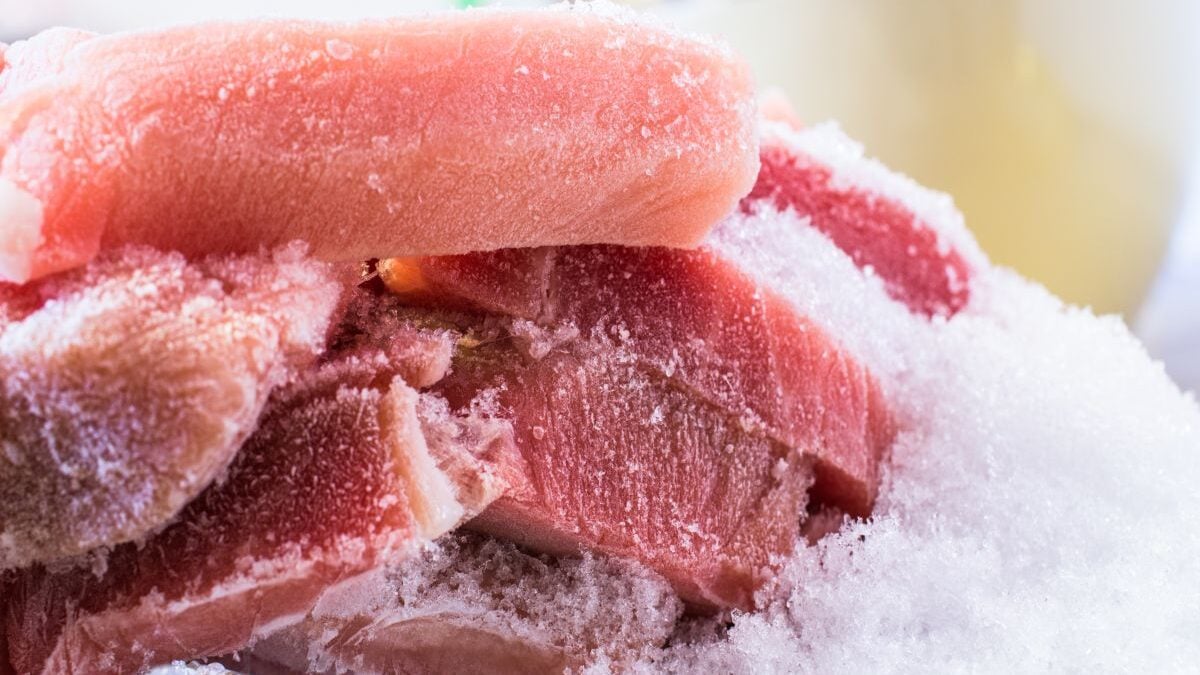Recognizing Spoiled Pork: Key Indicators
Today I have a packed article on how to tell if pork is bad. This is an extremely important topic and could save your life! We will not only take a look at how to know when the meat is bad but also how to choose the freshest cuts and store them properly.

If you want to learn more about working with pork, you should also read this article on How Long To Bake Pork Chops.
And don’t forget to check out the new articles and recipes like how Long To Cook Ribs In The Oven At 350F or Slow Cook Ribs In An Oven At 200 Degrees I release every week!
What Are We Looking At Today, And Why Is It Important?
There are many factors on how to determine when pork has gone bad, but the question I will probably be asked most is why is this important.
And there really is just one answer: Not knowing these signs can cause death.
I know! So dramatic. But it’s actually true! The bacteria that specifically grow on pork can be deadly if left unchecked. you do not want to be eating bad pork and risk getting food poisoning.
The Tell-Tale Signs
If you’re handling pork often, you know that there are two easy ways to test if pork is bad. The first is by looking at the meat, and the second is by doing a sniff test. These are the surest ways to determine how to tell if your pork is bad.

What Does Bad Pork Look Like?
Bad pork meat is usually discolored in one way or another. This can be in sections or an overall dull, grayish color. Also, if your pork has a green or yellow hue, it should be immediately discarded. When pork discolors like that, it is WAY beyond saving.
If you have a fatty cut, the fat will also turn from white to a pale, off-white, or yellow color due to the fat marbling.
These are all instant indicators that the meat is no longer fresh.
Another way to tell that the pork has gone bad by just looking at it is if any slimy or sticky substances have formed on the surface. This is an instant no-no, and the meat should be discarded immediately!
What Does Bad Pork Smell Like?
When pork meat goes bad, it smells rancid, sour, rotten, and generally has an unpleasant odor. Trust me, you cannot miss it!
That’s one “great” thing about the spoiling signs of this meat. Unlike many others, the smell gives away the freshness almost instantly!
So, if you are ever unsure and the meat smells kind of funky, it is best to toss it rather than risking to eat bad pork.
How To Tell If Pork Chops Have Gone Bad
The signs for spoiled pork chops are pretty much the same as for all spoiled pork cuts.
When the chops start going off, a sour, rancid smell sour odor will form on the meat. Simultaneously, the color will become dull and eventually turn gray, yellow, or green.
Depending on the type of bacteria present, there may be a very slimy texture and sticky layer on the meat. And, as I’ve mentioned, the fat or marbling will also become less white and turn yellow or gray.

How To Tell If Pork Is Bad After It Has Been Cooked
Now, just because the pork meat or chops have been cooked doesn’t mean that they cannot spoil anymore.
In fact, once the meat has been exposed to heat, it is at even more risk of spoiling.
Cooked pork will only last between 3-5 days inside the fridge, and even that timeframe is pushing it. You have to perfectly store the meat to ensure it doesn’t get exposed to bacteria through cross-contamination. Even then, the bacteria already present can rapidly multiply if the pork isn’t stored at consistently cold temperatures.
Now, how do you know if cooked pork is still fine to eat?
The signs do differ slightly from spoiled uncooked pork chops and pork. The smell will be less of rotten meat and more of an unpleasant sour odor and rancid.
Furthermore, cooked spoiled pork tends to get a gray, dull color first, followed by a slimy layer. The meat doesn’t quickly turn yellow or green because the caramelization on its surface usually hides it.
On cooked spoiled pork meat, you can also usually see mold growth. That’s pretty rare on uncooked meat. It is a sure sign that you have bad pork chops or pork meat in general.

How To Choose Fresh Pork
So, now that you know exactly how to tell if raw pork has gone bad, let’s take a look at how you can choose the best cutes of fresh pork meat in-store or at the butcher.
Color
First and foremost, the color of fresh pork is bright and uniform pinkish-red, which should be easy for you to identify if you like preparing pork often. The fat (or any marbling) is also a clean white color.
If the color is slightly pale, you should look for a different cut. It doesn’t indicate spoiled pork, but it does indicate that the cut isn’t as fresh as it can be.
Then, you can also look out for dark bones. This is not good. The bone of the cut should be clean and white (or slightly off-white) – just like the fat is. Again, a dark bone doesn’t necessarily indicate spoiled meat, but it’s less than ideal.
Texture
Aside from the color of the meat, you should also consider the texture; the meat should be dry, not wet, and should not feel slimy or sticky or have any type of substance on it.
It’s also wise to buy pork that is not too tender or too tough. Too much tenderness could mean that the meat has been out for too long, while too tough means you will have a harder time cooking it to tenderize.

How Long Does Pork Last in the Fridge
When properly stored in the refrigerator, raw pork can generally last for three to five days. It’s important to keep the pork in its original packaging, with the expiration date or “sell by date,” which provides some protection and prevents cross-contamination.
If you prefer, you can also transfer the pork to a sealed container or wrap it tightly in plastic wrap to maintain its freshness. This applies to any cut of pork, including pork loin, pork chops, and ground pork.
For cooked pork, the shelf life is slightly shorter. Cooked pork can last for about two to four days in the refrigerator when stored properly in an airtight container or wrapped tightly in aluminum foil or plastic wrap.
If you have limited space, you can place them in the same container as other meat, including chicken breast, given that they are in different plastic bags.
Ensure that you let the pork cool to room temperature before refrigerating to prevent condensation and bacterial growth.
How Long Does Pork Last in the Freezer
Freezing will ensure that you get to keep the pork fresh for longer. Generally, raw pork can be safely stored in the freezer for three to six months. However, it’s important to note that the specific duration can vary depending on factors such as the cut of pork, packaging, and the quality of the meat.
Moreover, you can always freeze cooked pork and pork chop to extend its shelf life for up to three months, ensuring that you place them in an airtight container.
When you try to thaw frozen pork, remember not to rush the process to avoid getting it all mushy. Thaw it by running cold water over it for a few minutes.

How To Store Raw Pork
First, it is important that you store uncooked meat away from cooked foods. Usually, raw meat is stored on the bottom shelf, and cooked meat on the top.
You can store different types of pork cuts together, as long as they are the same age.
Try to keep the meat inside its original packaging for as long as possible. Otherwise, wrap it in wax paper, then lightly cover it in plastic. This will keep it from drying out and spoiling quickly.
Ideally, the fresh meat should be stored in a fridge with a stable temperature of 40ºF (4ºC).
How To Store Cooked Pork
Cooked pork should always be stored inside an airtight container or resealable bag.
As I’ve mentioned, it is best to place cooked meat and cooked food on the top shelf. This keeps it far away from the highly perishable raw meats and ingredients.
You can keep cooked leftover pork in the fridge for about 2-3 days. It might last longer, but I tend to lean on the safer side of things and cook pork only when needed to avoid leftovers.
Conclusion
Overall, understanding how to tell if pork is bad is crucial for preventing potential food poisoning. By paying close attention to the visual appearance and odor of both cooked and raw pork, it becomes easier to identify the signs of spoiled meat.
Additionally, selecting fresh pork involves examining the color and texture of the meat. It is also important to be knowledgeable in how to properly store pork good to extend their shelf life.
By following these best practices, you an ensure the safety and quality of meat when you are ready to cook pork for consumption.
Frequently Asked Questions
When the pork smells bad, that almost always means that the pork is bad, and you should not be using it to avoid any foodborne illnesses.
You should also watch out for acidic aroma, ammonia-like smell, and a slimy texture which are all signs of spoiled meat.
Discoloration does not automatically mean you have spoiled meat or that your pork is bad.
Meat changes color when exposed to different temperatures and oxygen, especially with frozen pork, and you can still use discolored meat as long as there is no unpleasant smell or other signs of spoilage.



